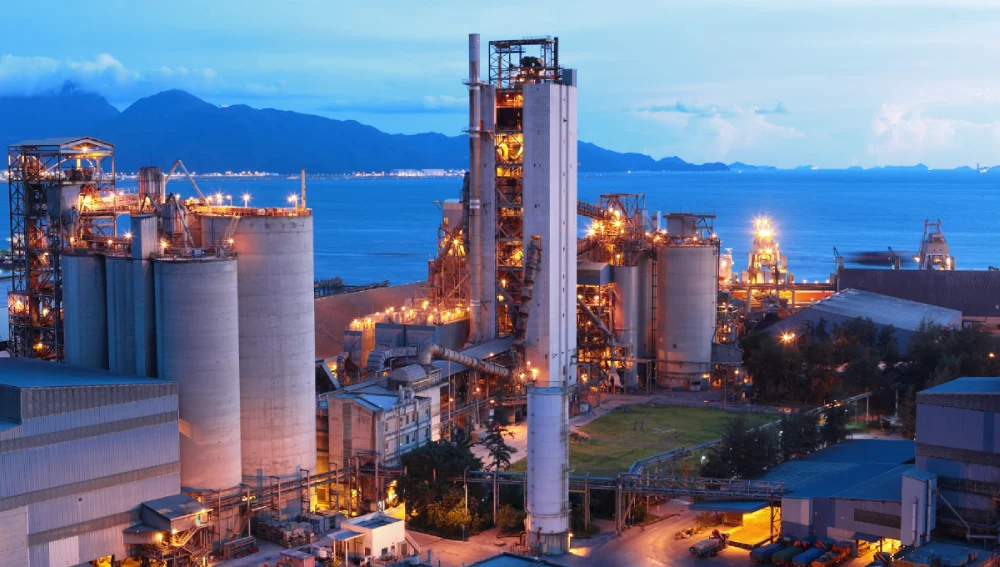Cement in the construction industry is a key constituent used as a binding agent worldwide. It plays a crucial role in the real estate industry, and its roots can be traced back to ancient Greece and Rome. It is used in concrete and mortar for binding during construction.
In 2023, 4.1 billion tons of cement were estimated to have been produced worldwide. The first cement manufacturing plant was set up in Madras in 1904 in India. In terms of cement production, India ranks second behind China. About 65% of cement’s total consumption is in India, which has the biggest housing and real estate sectors. The growth of the cement industry also leads to economic development as there is an increasing demand for construction and other infrastructural activities. Read on to learn about the raw materials that are used to manufacture this essential material.
Raw Materials Used in the Manufacturing of Cement
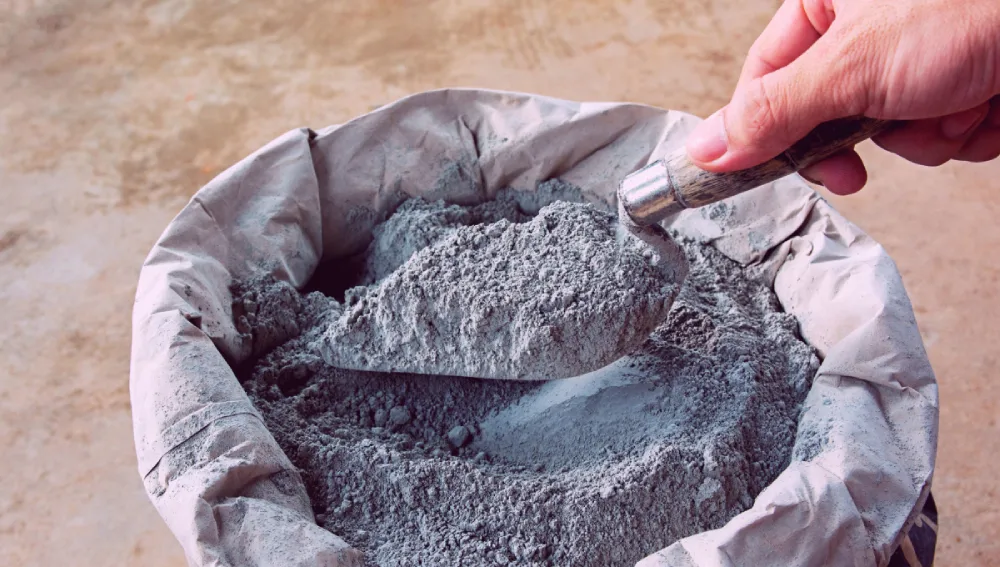
The preparation of cement using the raw materials involves the following process:
- Step 1: Mining -The extraction of raw materials such as limestone and clay from mines and quarries.
- Step 2: Grinding process- These raw materials are grinded and crushed into a fine powder-like form. This is called raw material.
- Step 3: Clinkerization– The raw material is blended in specific proportions and calcined in a rotary kiln at gradually increasing temperatures, from 600 to 1450 °C. The hot clinker is then removed from the kiln and cooled using a grate cooler.
- Step 4: Cement grinding and storage- The cooled clinker with gypsum is finely ground in a cement mill to form the hard cement. The other raw materials are added during the grinding process.
The raw material added during the grinding process defines the quality of the cement. Therefore, the raw materials determine the cement grade. Let us discuss in detail the various raw materials that are used in the production of cement.
1. Limestone
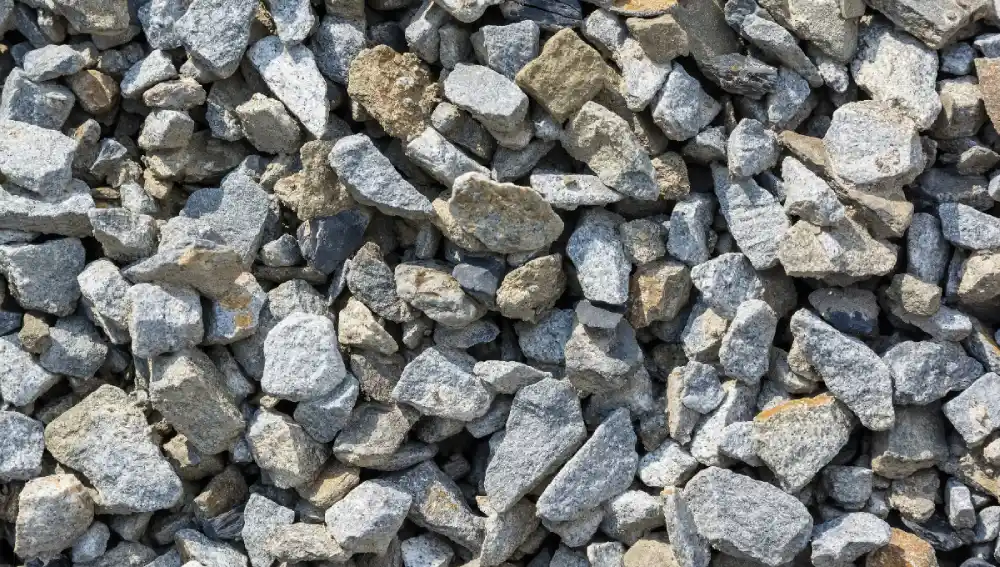
- Limestone is the key element of cement. It contains nearly 85–95% calcium carbonate (CaCO₃).
- 75% of cement is limestone, which is thus the component of cement.
- It contains impurities such as silica, alumina, and iron oxides.
- For cement manufacturing, high-grade limestone is preferred
2. Clay
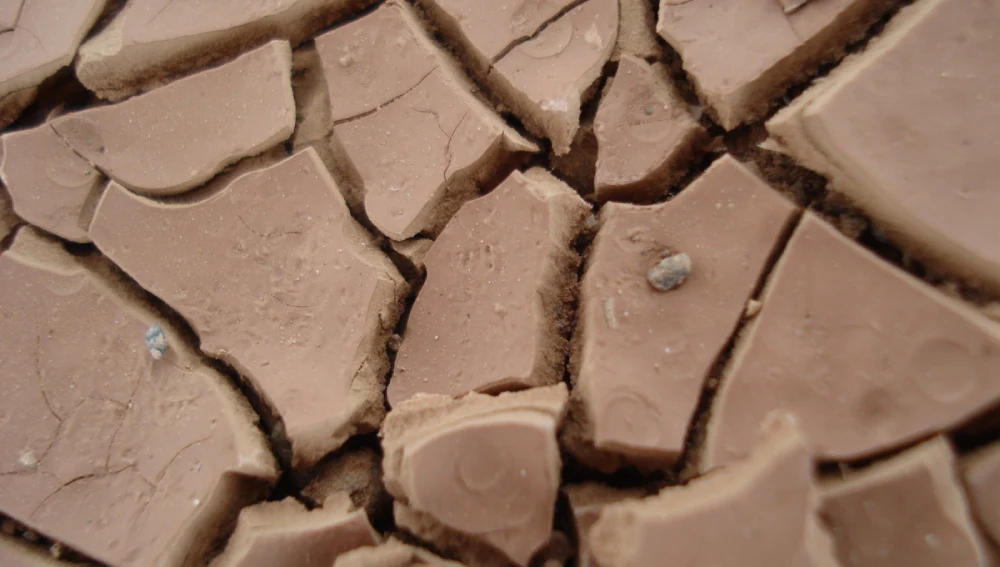
- 30 to 40% of the cement is clay. It can also be used as SCM (supplementary cementitious material), in cement and concrete. It can improve strength and durability comprehensively. It reduces carbon dioxide (CO2) emissions.
- The clay contains a mixture of silica (SiO₂), alumina (Al₂O₃), and iron oxide (Fe₂O₃). Therefore, it contributes to providing the necessary silica and alumina in the cement.
- The moisture content of clay should be minimal for the process to be efficient. For cement clinker phases to form, clay is essential.
3. Shale
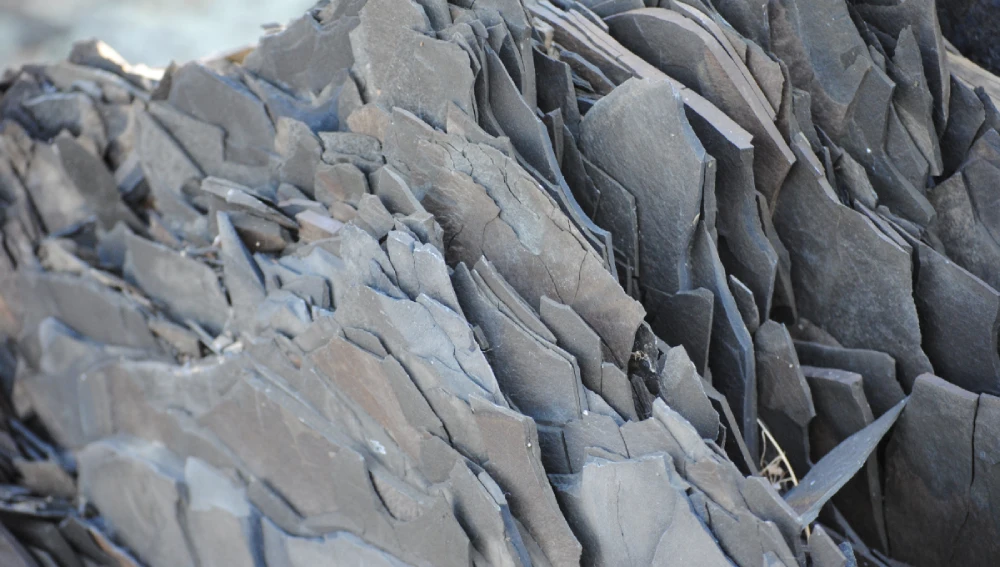
- Shale is similar to clay and can function as an alternative. It is composed of clay minerals, quartz, and organic matter. It provides comprehensive strength.
- It is widely used in clinker formation.
- It is an alternative source of silica and alumina. Shale is required for the cement manufacturing process.
4. Sand

- Sand in cement is used to adjust the ratio of silica.
- The sand composition has a silica content greater than 95%
- The silicate phase contributes to the strengthening of the cement. It requires essential content of the silica.
- Silica sand is 5–10% of the total raw mix.
5. Iron Ore
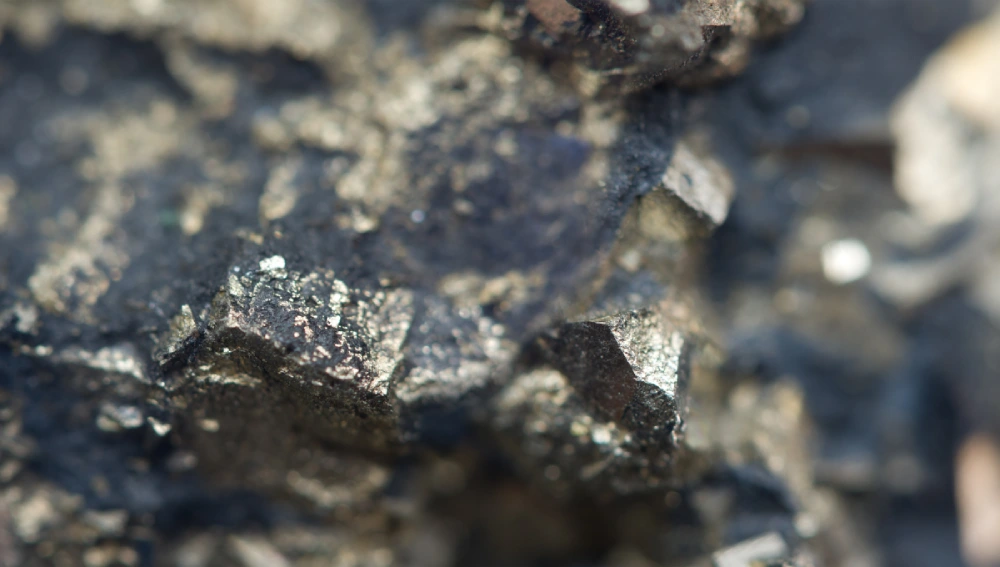
- Iron ore contains 30–70% iron oxides like hematite (Fe₂O₃) and magnetite (Fe₃O₄). It gives color and strength to the final product of cement.
- The iron ore is like a rock or mineral from which the iron can be easily extracted.
- It contains sulfur and phosphorus, which are very minimal impurities
- This contributes to 0.5–6% of the cement raw material.
- The iron ore helps lower the melting temperature of the raw mix.
6. Gypsum
- Gypsum contains 70–90% calcium sulfate dihydrate (CaSO₄·2H₂O). It is a soft sulfate mineral, which . usually controls the setting time of the cement when added to the clinker.
- It should be highly pure, as any impurities can affect the quality of the cement.
- Gypsum is around 3–5% of the entire product. It is added to the final grinding process of the cement during its manufacturing.
- Gypsum allows proper handling and placement, which helps control the setting time. In this way, the cement will not set too fast.
7. Fly Ash
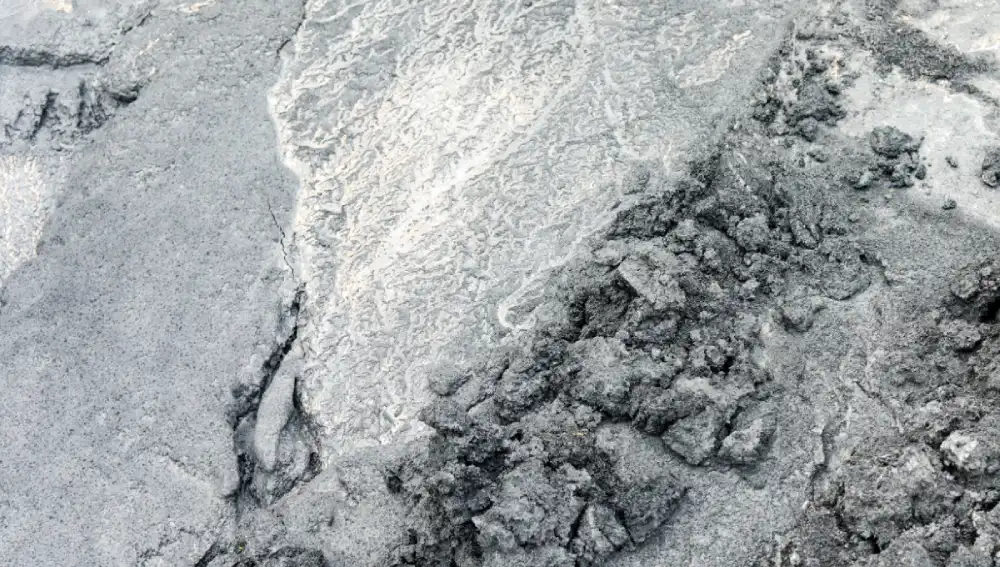
- Fly ash is a byproduct of coal-burning power plants that can be used in concrete as a supplementary cementitious material (SCM).
- It reduces cracking as it ensures a longer setting time. Fly ash also helps to enhance the durability and workability of concrete.
- It is composed of 0–60% silica (SiO₂), 15–30% alumina (Al₂O₃), and 5–10% iron oxides (Fe₂O₃). It also reduces the heat of hydration, making it long-lasting.
- It is composed of 0–60% silica (SiO₂), 15–30% alumina (Al₂O₃), and 5–10% iron oxides (Fe₂O₃). It also reduces the heat of hydration, making it long-lasting.
8. Blast Furnace Slag
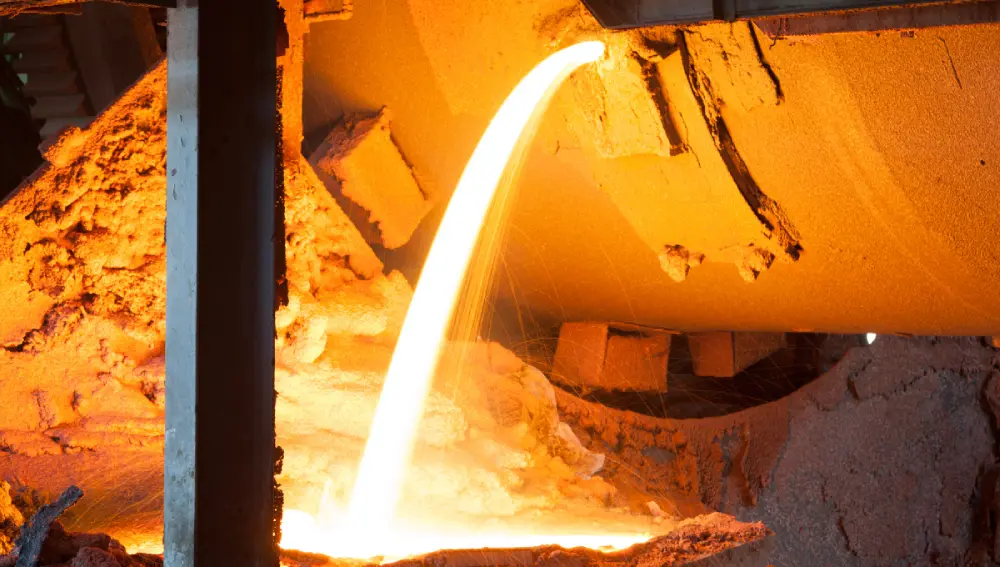
- Blast Furnace Slag has hydraulic properties and is a byproduct of steel manufacturing. It is obtained from the production of iron in a blast furnace.
- Ground Granulated Blast Furnace Slag (GGBFS) is a supplementary cementitious material. It contains 30–40% silica (SiO₂), 8–18% alumina (Al₂O₃), and 40–50% lime (CaO). It improves the cement properties and reacts with water to form cementitious compounds.
- Slag improves sulfate resistance as well as the overall performance of the cement.
9. Bauxite
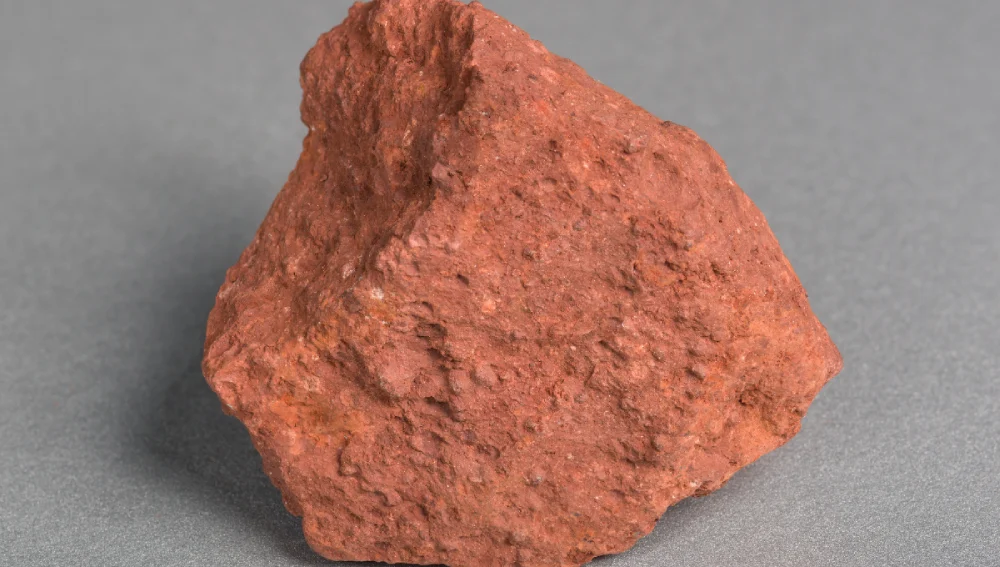
- Bauxite, also known as red mud, is the by-product of alumina processing.
- Bauxite contains a high aluminum content (30–60%). It is also a sedimentary rock. It enhances the formation of calcium aluminum oxide compounds.
- It is typically used in types of cement like high-alumina cement. During the reproduction of cement, it is used as a raw and pozzolanic material.
- It also helps to reduce the melt formation temperature by 200 degree Celsius by adding 2-10% of bauxite residue.
Conclusion:
In conclusion, the role of cement in the modern world is irreplaceable in the construction industry. Cement has widely evolved from its early origins to its modern role in sustainable development. As it articulates its strength and enduring value, cement has consistently proven its reliance. India has a high quality and quantity of limestone deposits. Therefore, the cement industry has great growth potential.

